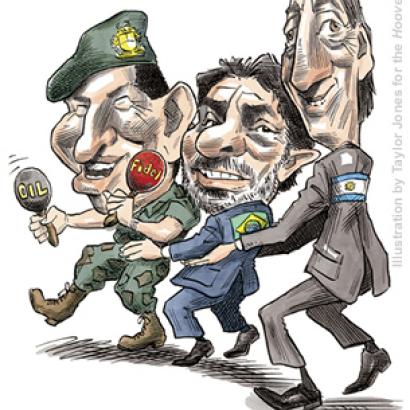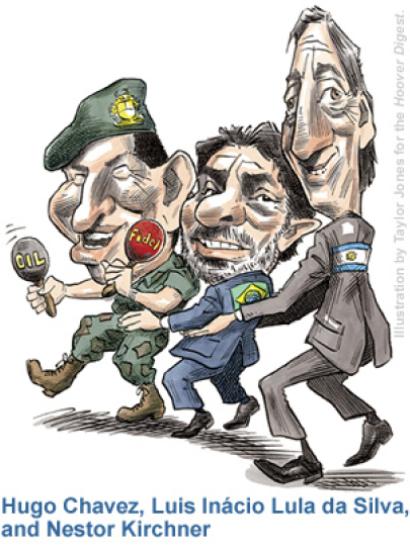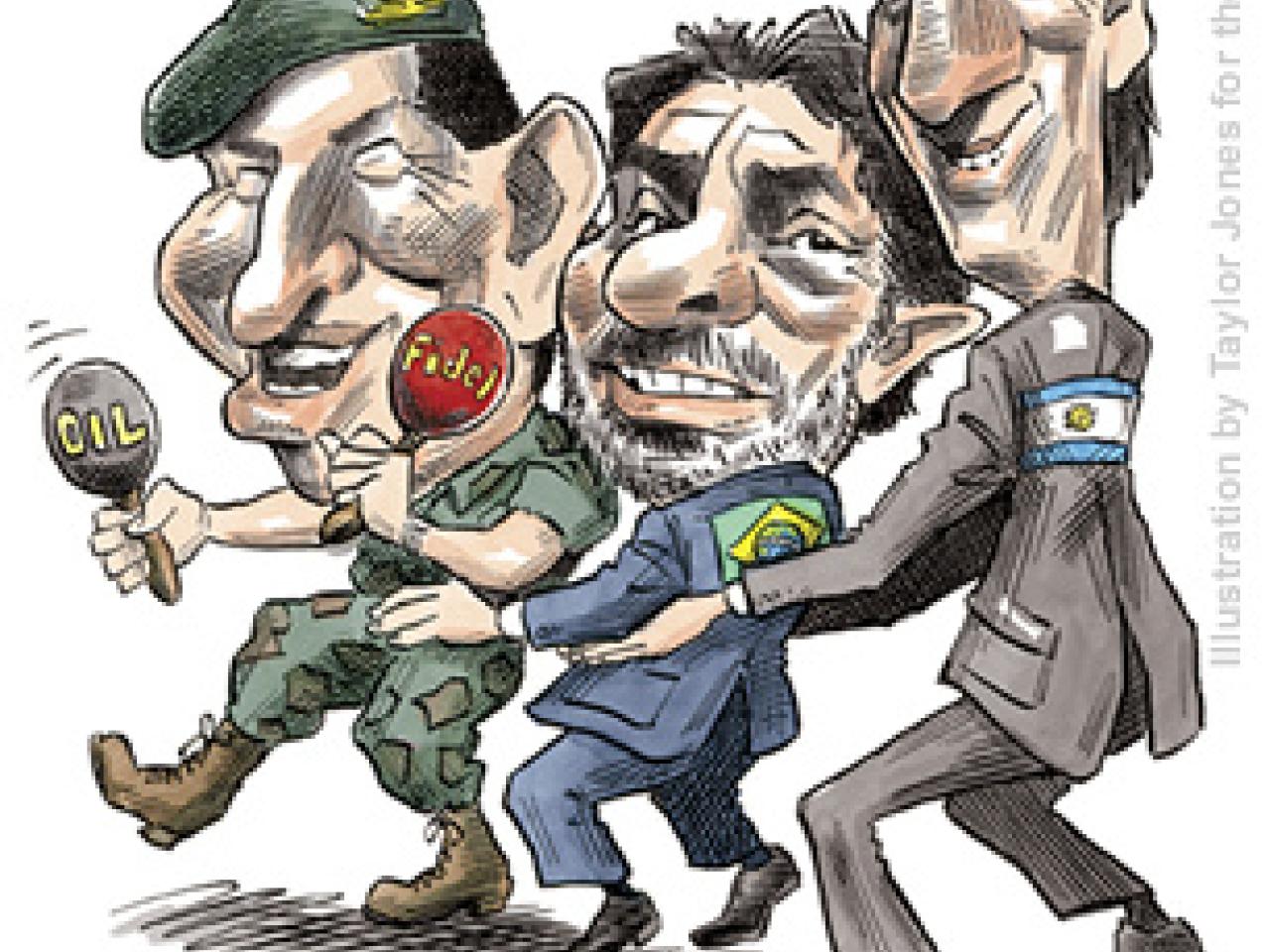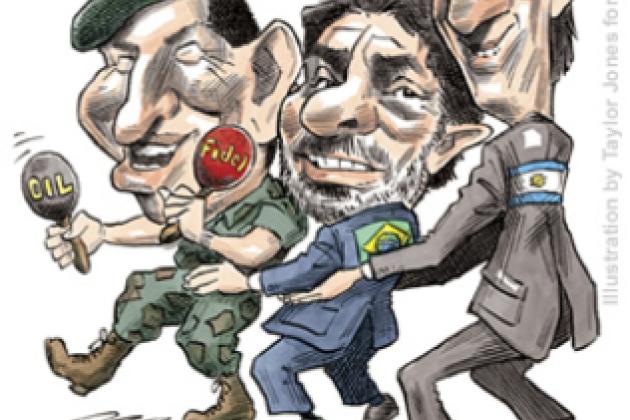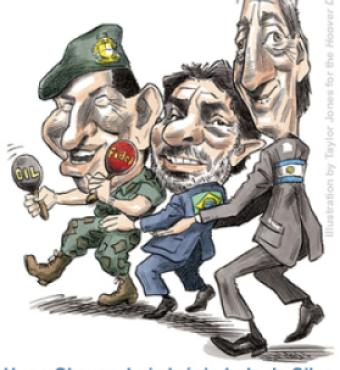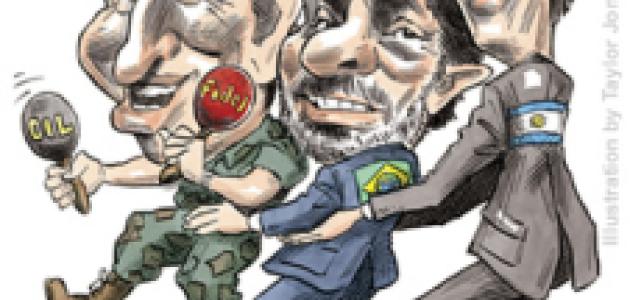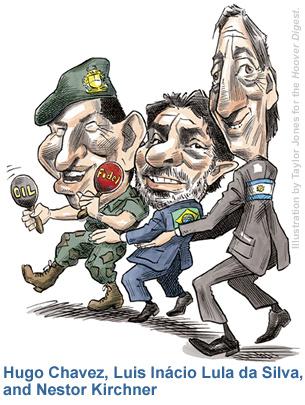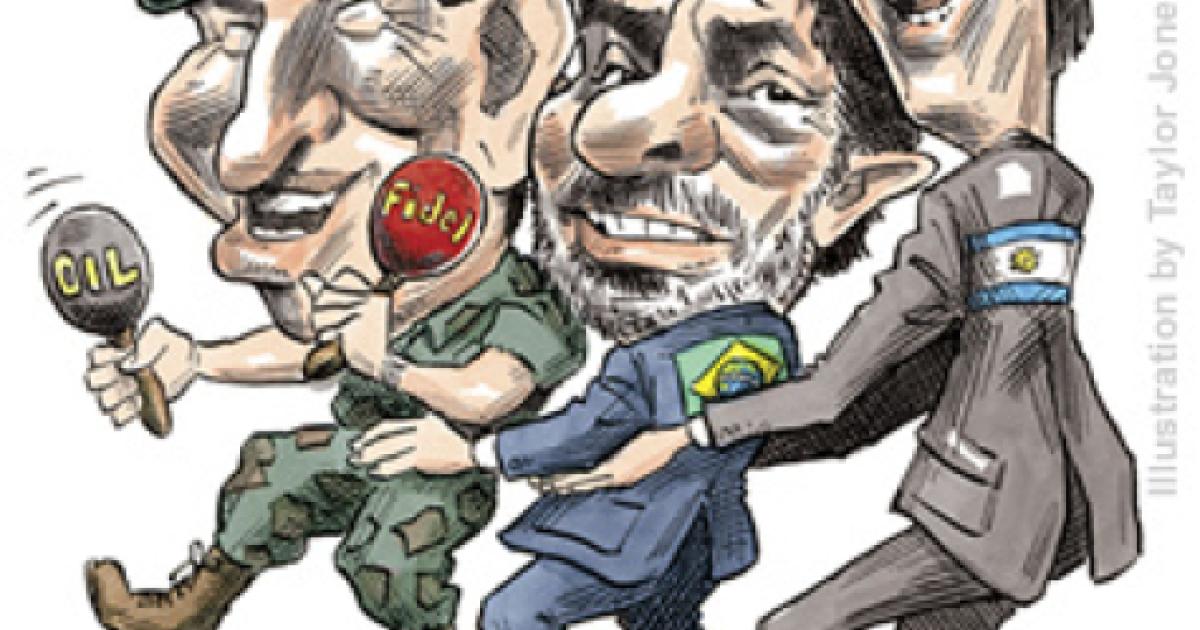- Economics
- International Affairs
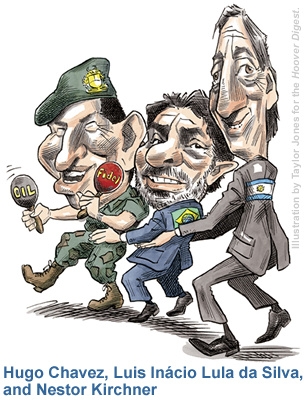
During the 1990s, governments that favored privatization, deregulation, and opening their borders to foreign trade and investment came to power in Latin America. Over the past five years, virtually all those governments have been swept aside, replaced by presidents who lean much farther to the left.
In Brazil, the Workers’ Party candidate, Luis Inácio Lula da Silva, was elected to the presidency in 2002. The following year, Argentina followed Brazil’s lead, electing a left-leaning Peronist, Nestor Kirchner. Earlier this year Uruguay went the way of Brazil and Argentina, electing Taberé Vázquez, who ran as the candidate of a united front of left parties—ending 150 years of electoral dominance by the country’s two established political parties. Venezuela, for its part, retained Hugo Chavez and his “Bolivarian Revolution” in a national referendum in August 2004. Bolivia has yet to elect a leftist president, but it is likely to do so. The country’s “Movement Toward Socialism” has forced President Carlos Mesa to resign, and it has signaled that those next in line for the presidency will be met with a similar campaign of blockades and protests. Mexico now appears poised to follow in the footsteps of its southern neighbors: The leading contender in the 2006 presidential elections is Andres Manuel Lopez Obrador, the populist mayor of Mexico City, who will run on the ticket of the Party of the Democratic Revolution.
What accounts for this sea change in Latin American politics? Have Latin American voters undergone a profound ideological transformation in the space of half a decade? Or are there other factors that explain the defeat of politicians who espoused free markets by those whose rhetoric echoes a more populist past?
Latin America’s anemic economic performance explains the leftward shift in its politics. With the exceptions of Chile and Costa Rica, the economies of Latin America have limped along for the past two decades. In the 1980s, Latin America’s economies went into a nosedive as decades of protectionism, government intervention in markets, and deficit spending all came home to roost. In an effort to turn things around, in the 1990s Latin American governments opened up their economies to foreign trade and investment, cut spending, and sold off state-owned enterprises. These reforms came with substantial adjustment costs, but their proponents promised that these would be more than compensated for by the rapid economic growth that was sure to follow. The reforms of the 1990s did produce positive impacts but not of the magnitude that populations had been led to expect. Indeed, most countries grew only fast enough in the 1990s to make up for their contraction in the 1980s. Mexico is a classic case in point: Its per capita GDP in 2004 was only 15 percent above what it had been in 1982.
At the same time that its economies have limped along, Latin America’s labor force has grown rapidly. Most Latin American countries have a demographic structure that is the flipside of that of the United States: Most of the population is young and has only recently entered the workforce or is about to do so. The implication is clear: Anyone who has entered the labor market since the early 1980s—which is to say the majority of voters—has been confronted by a profound absence of opportunities.
It should therefore not be a surprise that voters are willing to experiment with governments that promise a more heterodox approach to economic policymaking. Those more heterodox approaches, it bears saying, have for the most part been surprisingly restrained given the circumstances. Brazil’s president, Luis Inácio Lula da Silva, in particular, has earned high marks both from foreign investors and his own business community. It should also not be surprising that the region’s new governments have been unenthusiastic in the extreme about U.S. proposals for a hemisphere-wide free trade area.
The implication for U.S. policy is clear: If policymakers are concerned about the leftward shift in Latin America, they should concentrate on helping the region grow—and that help will need to go well beyond free trade. Indeed, they might take a page out of the experience of the E.U., whose wealthier nations have helped subsidize public investment in its poorer partners.








